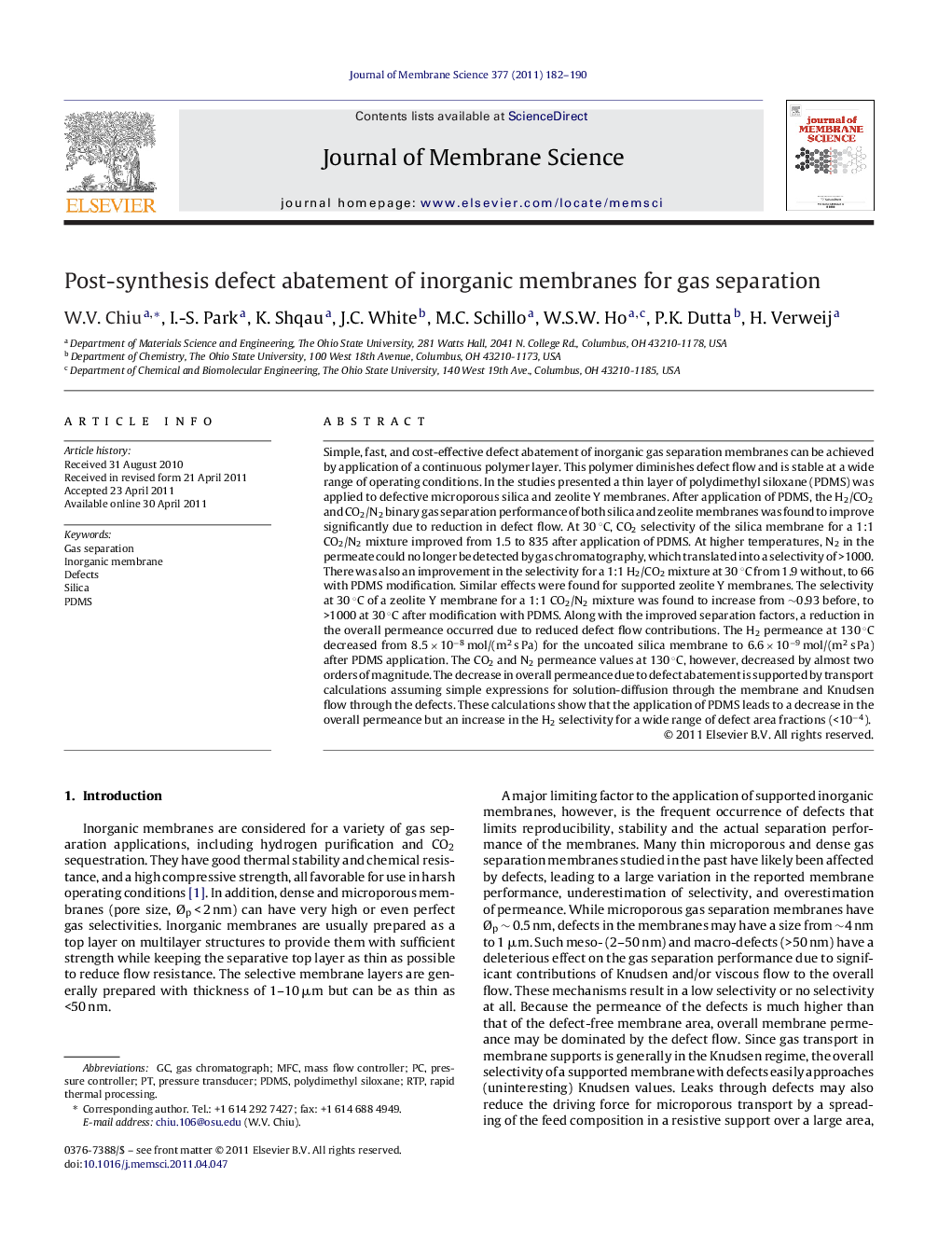| Article ID | Journal | Published Year | Pages | File Type |
|---|---|---|---|---|
| 635506 | Journal of Membrane Science | 2011 | 9 Pages |
Simple, fast, and cost-effective defect abatement of inorganic gas separation membranes can be achieved by application of a continuous polymer layer. This polymer diminishes defect flow and is stable at a wide range of operating conditions. In the studies presented a thin layer of polydimethyl siloxane (PDMS) was applied to defective microporous silica and zeolite Y membranes. After application of PDMS, the H2/CO2 and CO2/N2 binary gas separation performance of both silica and zeolite membranes was found to improve significantly due to reduction in defect flow. At 30 °C, CO2 selectivity of the silica membrane for a 1:1 CO2/N2 mixture improved from 1.5 to 835 after application of PDMS. At higher temperatures, N2 in the permeate could no longer be detected by gas chromatography, which translated into a selectivity of >1000. There was also an improvement in the selectivity for a 1:1 H2/CO2 mixture at 30 °C from 1.9 without, to 66 with PDMS modification. Similar effects were found for supported zeolite Y membranes. The selectivity at 30 °C of a zeolite Y membrane for a 1:1 CO2/N2 mixture was found to increase from ∼0.93 before, to >1000 at 30 °C after modification with PDMS. Along with the improved separation factors, a reduction in the overall permeance occurred due to reduced defect flow contributions. The H2 permeance at 130 °C decreased from 8.5 × 10−8 mol/(m2 s Pa) for the uncoated silica membrane to 6.6 × 10−9 mol/(m2 s Pa) after PDMS application. The CO2 and N2 permeance values at 130 °C, however, decreased by almost two orders of magnitude. The decrease in overall permeance due to defect abatement is supported by transport calculations assuming simple expressions for solution-diffusion through the membrane and Knudsen flow through the defects. These calculations show that the application of PDMS leads to a decrease in the overall permeance but an increase in the H2 selectivity for a wide range of defect area fractions (<10−4).
► PDMS can be easily applied as thin films on top of inorganic membranes. ► PDMS modification of inorganic membranes significantly improves gas selectivity. ► Defect flow is reduced due to filling of defects with PDMS. ► Modification can improve selectivity over a wide range of defect area fractions.
